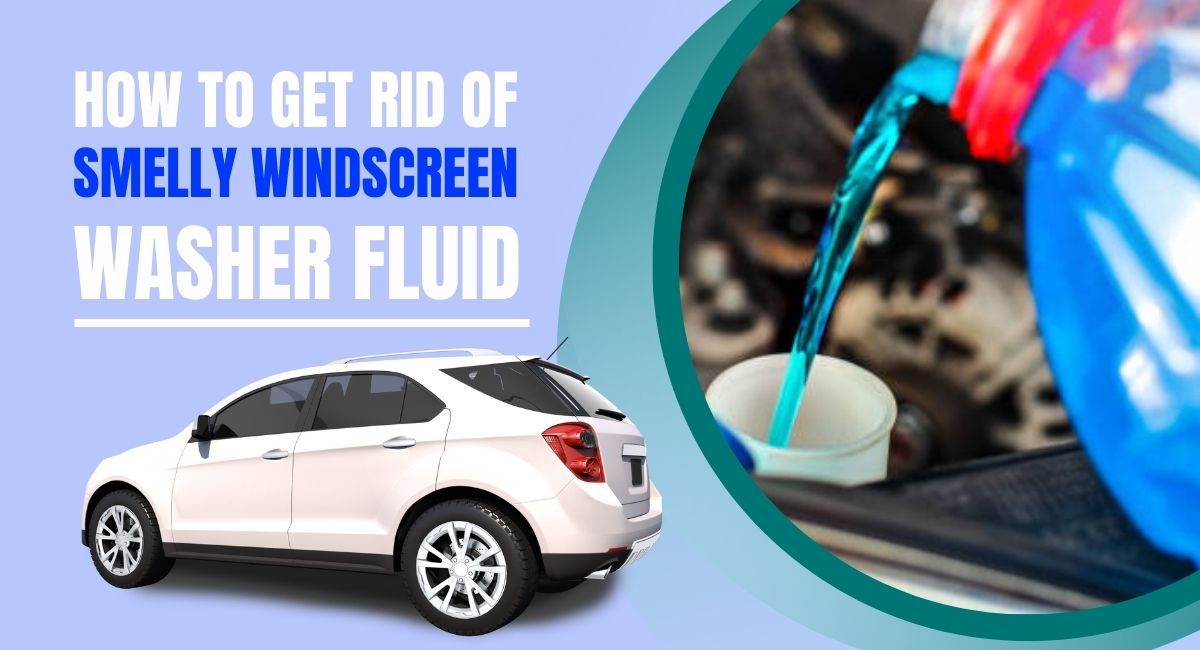You’re driving along a scenic route, enjoying the wind in your hair and the open road. Suddenly, a bug splatters on your windshield, obstructing your view. No problem, as you reach for the windscreen washer fluid lever. But as the fluid sprays onto the glass, an unpleasant odor fills the air, making your drive unbearable.
We’ve all been frustrated by the foul smell after using our windshield washer fluid. The main cause of smelly washer fluid is the growth of bacteria within the reservoir. If the liquid remains stagnant, it becomes an ideal environment for bacteria.
There are effective solutions to rid your windscreen washer fluid of its foul odor. In this article, we’ll explore the causes of smelly washer fluid, the symptoms to look out for, and provide a comprehensive guide on how to banish the stench for good.
Why Does My Washer Fluid Smell?
Have you ever wondered why your washer fluid emits such an unpleasant odor? Several factors contribute to this phenomenon. Bacterial growth in the reservoir, mold, mildew formation within the washer system, and contamination from external sources are common culprits behind smelly windscreen washer fluid.

Bacterial Growth
The most common cause of smelly washer fluid is the growth of bacteria within the fluid itself. When the washer fluid is exposed to moisture and remains stagnant for an extended period, it creates an ideal breeding ground for bacteria. These bacteria break down organic matter in the fluid, resulting in the production of unpleasant odors.
Mold and Mildew Formation
If moisture or water is trapped in the washer system or reservoir, mold and mildew can grow. These fungal growths emit a musty odor that can permeate the washer fluid, causing it to smell unpleasant.
Contamination
External contaminants, such as dirt, debris, or foreign substances, can enter the washer fluid reservoir or system. These contaminants can introduce unpleasant odors into the fluid, giving it a foul smell.
Low-Quality Fluid
Using low-quality or expired washer fluid can also contribute to the smell. Inferior products may contain impurities or additives that break down over time, resulting in an unpleasant odor.
Fluid Mix-Up
Sometimes, the washer fluid reservoir may have been filled with the wrong liquid, such as coolant or another automotive fluid. Mixing different fluids can create chemical reactions and produce odors.
How to Get Rid of Smelly Windscreen Washer Fluid
A dirty windshield is a cause for alarm, yet getting rid of smelly windshield washer fluid is a relatively easy task to tackle. It is wise to use some basic home remedies like distilled water, white vinegar, and the tiniest amount of chlorine bleach to eliminate the smell. Still, it’s essential to identify the specific cause of the smell to effectively address the issue and restore a fresh scent to your washer fluid.
There are effective methods to eliminate that unwanted smell and restore fresh, clean washer fluid. Here’s a step-by-step solution to eliminate smelly windscreen washer fluid and ensure a pleasant and odor-free driving experience. But first;
Identify the Symptoms
Recognizing the smell itself is the first step in addressing the issue. If your washer fluid emits a pungent or musty odor, it may need immediate attention. Other signs of washer fluid contamination include discolored or cloudy fluid, residue on the windshield after use, or even clogged washer jets.
Safety Precautions
Before diving into the solutions, it’s essential to prioritize safety. Handling smelly washer fluid requires caution. Always wear personal protective equipment (PPE) such as gloves and goggles to protect yourself from potential harm.
Now, follow the steps below:
Step 1: Emptying and Clean the Washer Fluid Reservoir
- Drain the existing washer fluid from the reservoir.
- Dispose of the old fluid properly and ensure it doesn’t come into contact with the environment.
- Clean the reservoir using a mild detergent solution. Scrub all the nooks and crannies to remove any residue or buildup that could contribute to the odor.
- Rinse the reservoir thoroughly with clean water to flush out all detergent.
Step 2: Flushing the Washer System
Disconnect the washer fluid hoses and flush the system with water or cleaning solutions. This step will help remove odor-causing bacteria and contaminants.
- Insert a hosepipe into the washer bottle, allowing the water to flow for around ten minutes.
- Ensure the hosepipe reaches the bottom of the bottle. The flushing action starts from the bottom and effectively clears any accumulated residue. The grime and debris conveniently wash away, draining down the gutter.
- Afterward, refill the washer bottle with a concentrated solution of washer fluid, and the problem will not resurface.
Step 3: Using Commercial Washer Fluid Additives
Consider using commercial washer fluid additives designed to tackle odor problems. These additives contain ingredients that neutralize the foul smells and freshen the washer fluid. Choose an additive that suits your needs and follow the manufacturer’s instructions. Add the additive directly to the washer fluid reservoir, ensuring it is mixed well with the fluid.
Step 4: Implementing Preventive Measures
Prevention is key to maintaining odor-free washer fluid in the long term. Adopt these preventive measures to minimize the chances of a smelly washer system:
- Regularly replace the washer fluid with a high-quality product from reputable brands. It ensures a fresh supply of liquid without any pre-existing odors or contamination.
- Keep the washer fluid reservoir tightly sealed to prevent external contaminants from entering and causing odor issues.
- Park your vehicle in shaded areas to minimize bacterial growth in the washer fluid.
- Consider adding a small amount of isopropyl alcohol (rubbing alcohol) to the washer fluid. It can help inhibit bacterial growth and prevent odor formation.
DIY Natural Remedies
As mentioned, getting rid of smelly windshield washer fluid is easy. So, if you prefer natural remedies, try these DIY solutions:
- Vinegar Solution: Prepare a mixture of vinegar and water and flush the washer system. The acidic properties of vinegar help eliminate bacteria and neutralize odors.
- Lemon Juice Solution: Mix lemon juice with water and use it to flush the washer system. Lemon’s natural antibacterial properties will combat odor-causing agents effectively.
- Baking Soda Solution: Create a baking soda-water paste and apply it to the washer fluid reservoir. Allow it to sit for a while before flushing the system with water. Baking soda’s deodorizing properties will eliminate unpleasant smells.
Seek Professional Help
If all else fails or you need more clarification about handling the issue yourself, it’s best to consult a mechanic or professional service. These experts can diagnose and repair any underlying problems causing the smelly washer fluid.
Important Read: Why Does My Car Smell Like Nail Polish Remover?
Conclusion
Don’t let smelly windscreen washer fluid ruin your driving experience. By following the solutions provided in this article, you can bid farewell to the foul odor and enjoy a fresh, pleasant ride every time. Remember to prioritize safety, explore commercial additives, and try natural remedies as needed. With a little effort and know-how, you’ll eliminate the odor and regain the joy of a clear, sweet smell.
